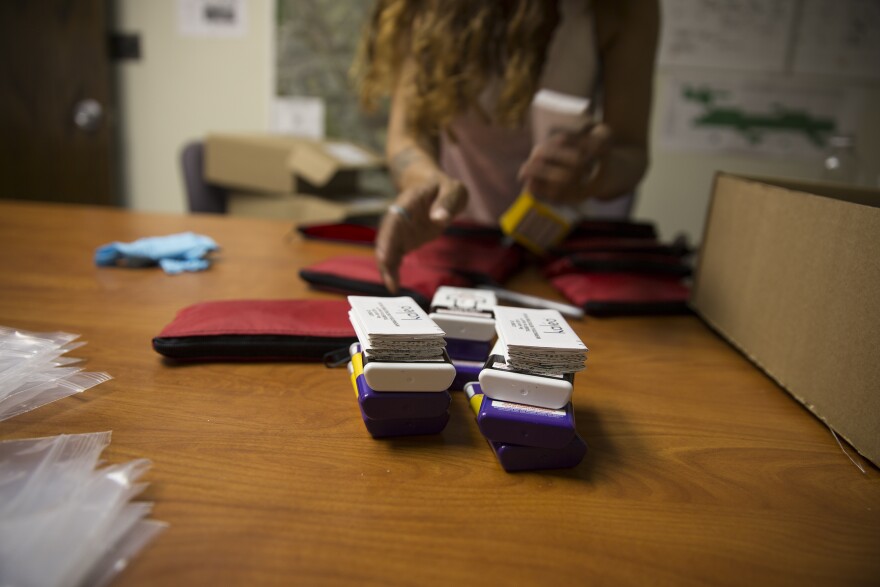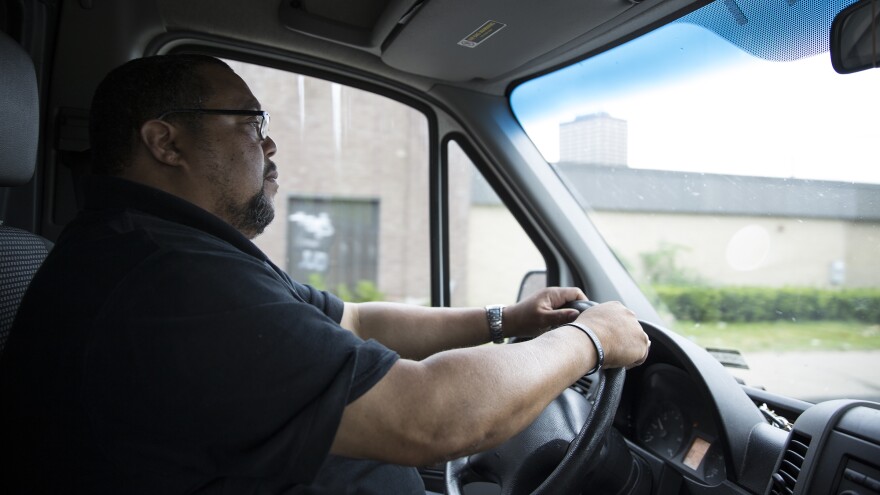Advocates say the best way to prevent overdose deaths is to get naloxone directly into the hands of heroin users.

Sherwood Taylor remembered the time he saw a friend die of an overdose, just feet away from where he sat on his bed in his Hartford apartment.
“Matter of fact, that chair right there, he fell out of it. Boom," Taylor said. "I said: Mike! I don’t hear him breathing no more. So I get up, I snap. So I call 911, said a guy OD’d here. And they did work on him. But he died. They carried him out of here in a body bag.”
At the age of 75, Taylor defies statistics. He’s been using heroin for more than 50 years. The average drug user will die 15 to 20 years after they start using. So Taylor’s seen his fair share of overdoses -- and he’s seen a change in the way heroin users try to stop ODs.
A few years later, another of his friends was overdosing, and this time, Taylor had naloxone, a drug that's designed to reverse an overdose. “So I shoot him up and a half hour or whatever, he’s like thanks Wood, you saved old boy. But I saved one, and one died," Taylor said.
Taylor, who's now in recovery, got the naloxone from the Greater Hartford Harm Reduction Coalition, an organization of volunteers trying to get overdose prevention kits into the hands of heroin users.
"I’d rather engage users themselves because they’re more at risk," said Mark Jenkins, founder of the coalition.
"I’d rather train at a McDonalds or Dunkin Donuts. Those are public consumption spaces."
Mark Jenkins
Naloxone has been used for decades in emergency rooms and ambulances, but advocates like Jenkins say that the best way to prevent overdose deaths is to get naloxone directly into the hands of heroin users, who are the most likely to be at the scene of an overdose.
Jenkins, who offers naloxone training sessions free to the public, said social services staff often have access to naloxone training, but that doesn’t help the user who’s shooting up at home -- or, in restaurant bathroom.


“I’m not worried about training staff. Nothing against, it’s good information, they need it," Jenkins said. "But the information dies along with the medication on the shelf when you’re giving medication to staff. I’d rather train at a McDonalds or Dunkin Donuts. Those are public consumption spaces."
New Connecticut laws make it easier to get naloxone from a doctor or a pharmacist. But Jenkins said that drug users -- dug to stigma and social isolation -- often don’t make it there.
Jenkins himself struggled with heroin addiction. He’s been clean for almost 20 years. Now, his phone doesn’t stop ringing with requests for naloxone training. His ringtone -- appropriately -- is a blaring emergency alarm. He tells the people he gives naloxone to that they should pass it on to other heroin users they know. And to come back to him for more if they run out.

But the coalition's supply of naloxone is running low. The Connecticut Department of Public Health pilot program it's a part of is coming to an end, and now, Jenkins is pulling from a donation of naloxone kits he received from a pharmaceutical company. Often, Jenkins funds the organization out of his own pockets.
Marianne Buchelli oversees the state’s community naloxone distribution pilot program. She said that demand has exceeded the state’s supplies.
"We continue to get calls from law enforcement," Buchelli said. "I just received a call from an emergency room out in the Danbury area -- other community providers. Friends and family members affected by prescription and injection drug uses."
Buchelli said she’s working to get funding for programs like Mark’s on the agenda for next year’s legislative session.
Massachusetts and Rhode Island have had community-based naloxone distribution for nearly a decade. But Jenkins said Connecticut has been slow on the draw.
“If this were anything else -- I mean, look at Ebola. How they sprang to action," Jenkins said. "Look now at Zika, and how they spring to action -- and an open wallet. But still isn’t the case with addiction.”

Jenkins drove his van through Hartford’s North End. He knows this is where he’ll find people who need clean syringes, naloxone, and sometimes, a ride to the hospital.
He saw a familiar face at a corner -- a heroin user he’s worked with over the years. He pulled to the side, rolled down the window, and asked him how he was doing.
"Just trying to survive," the man responded.
Correction: An earlier version of this story reported that Sherwood Taylor was 76. He was 75.
This story was produced for the New England News Collaborative.



